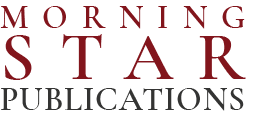The American Cancer Society just released a report on July 11 on cancer prevention factors. The study found that about 40 percent of cancers are preventable. And of those people who get cancer 50 percent of the deaths are preventable.
As expected the number one modifiable factor was quitting smoking. That has been true for years. It is no surprise. The good news is that many people have gotten this message. At one time over 50 percent of the population smoked. In 2021 it was down to 12 percent. That is less than a quarter of what it used to be. Delaware stands at 14 percent in the middle of the pack.
The unfortunate part of this is that the rates of smoking are twice that of the general population for some specific populations. Many of those individuals fall into low income groups. The cost of cigarettes makes their economic situation even worse.
Second-hand smoke accounts for about 3 percent of lung cancer deaths a year. The number is small. However, the victims are innocent.
The second risk factor is related to dietary measures. About 18 percent of cancer cases and 16 percent of cancer deaths are related to this. Two factors are food and alcohol intake. Obesity is a risk factor. Physical inactivity is a risk factor. Those four items are all interrelated in their cancer causing effects.
They looked at fruit servings per day. They looked at vegetable servings per day. They looked at alcohol consumption. They looked at physical activity levels. Delaware was again in the middle of the pack for all these measures.
A third factor was ultraviolet radiation. Over 90 percent of melanomas are related to ultraviolet radiation exposure. That is as true for tanning devices as it is for the sun. There are about 8,000 deaths per year from melanoma.
Sunscreen use among high school students is steady at about 15 percent. That number only goes up to 39 percent in the 18-24 year age group. It ultimately drops to 21 percent for those age 65 and older.
The fourth factor is exposure to certain infectious agents that are known to be cancer precursors. The most obvious one is Human Papilloma Virus (HPV). It causes just about all cervical cancers in women. It causes 90 percent of anal cancers. It causes 70 percent of oral cancers. It causes 60-70 percent of vaginal, vulvar and penile cancers.
We have a vaccine for it. It was approved in 2014. It protects against 90 percent of the specific viruses that cause these cancers. Vaccination before age 17 substantially lowers the risk of cancer by about 90 percent. Unfortunately, only about 60 percent of eligible individuals get the vaccine.
In this area Delaware is the 9th best state in the U.S. with coverage at a 69 percent vaccination rate.
Hepatitis B vaccine can help prevent liver cancer. Other viruses that can increase cancer risk include the HIV virus. They include something caused H. Pylori that can cause stomach ulcers. They include Hepatitis C. We do not have vaccines for these.
The fifth and final modifiable risk factor is related to occupational exposures to cancer causing agents. Mesothelioma is an example of this. Lymphoma from professional gardeners who use the product Round Up is an example.
Things like radon exposure increase risk. Outdoor air pollution causes about 4 percent of lung cancers. There is evidence that climate change also impacts this. For example, the smoke from wildfires related to climate change carries cancer causing materials.
Cancer is a diagnosis people do not want to hear. One of the ways of preventing that diagnosis is to look at factors we can modify. There are a number of them available.
